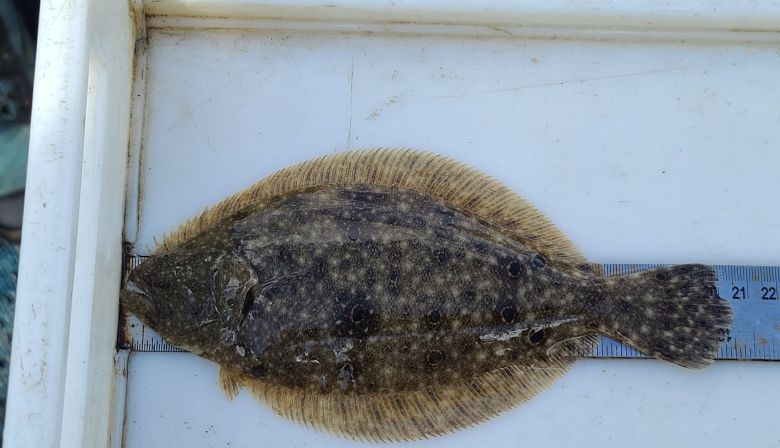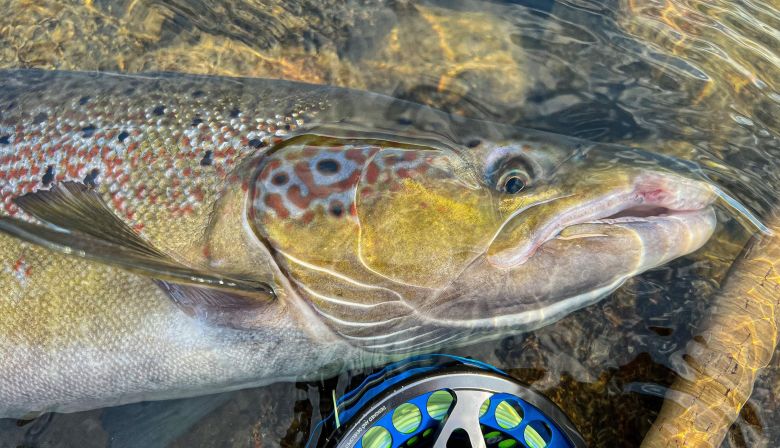
Subscribe & stay up-to-date with ASF

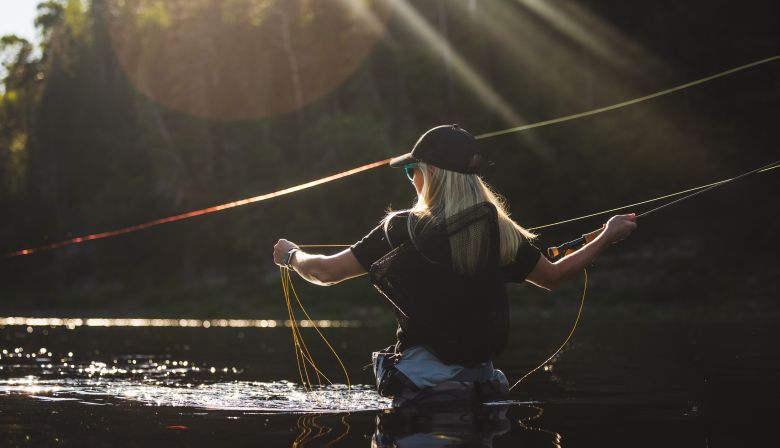
In this issue of RiverNotes, we feature regional angling updates along with a variety of upcoming fundraising and advocacy efforts. Please take the time to support the hard work of our affiliates. Please also share your upcoming events with us at rivernotes@asf.ca so we may feature.

The recreational salmon fishery for the island of Newfoundland officially closes at the end of the day on September 7th . The season started strong on June 1st with both excellent water levels and cool water temperatures, and these conditions held until about mid-July. Combined with the fact that runs appeared to be strong, and a little earlier than normal, most reported great success during the first half of the season. In stark contrast, from mid-July onward, hot and dry weather resulted in poor conditions and “spotty” fishing at best.
For all those anglers praying for rain during this drought, they finally got their wish late last week when heavy rains poured down across much of the island. Water levels spiked but dropped again quickly with the hot weather this past weekend. The temporary bump in water levels allowed thousands of stranded salmon to continue their journey up-river to their spawning grounds.
The fall angling season, which is restricted to the lower section of the Humber River, Exploits River, and Gander River will remain open for catch and release angling until October 7th, 2022.
Labrador rivers also got off to a great start this season with high water levels and cold-water temperatures which continued until about early August. With strong early returns, most anglers in Labrador reported great fishing to begin the season.
Returns remained strong in Labrador for the duration of the season. With the exception of two weeks in early August, when water levels were low and water temperatures were warm, good fishing conditions also persisted on most rivers in Labrador for the duration of the season. However, fishing has slowed down on the lower parts of some rivers in Labrador now that many fish have migrated further upstream. The season officially comes to an end in Labrador on September 15th.
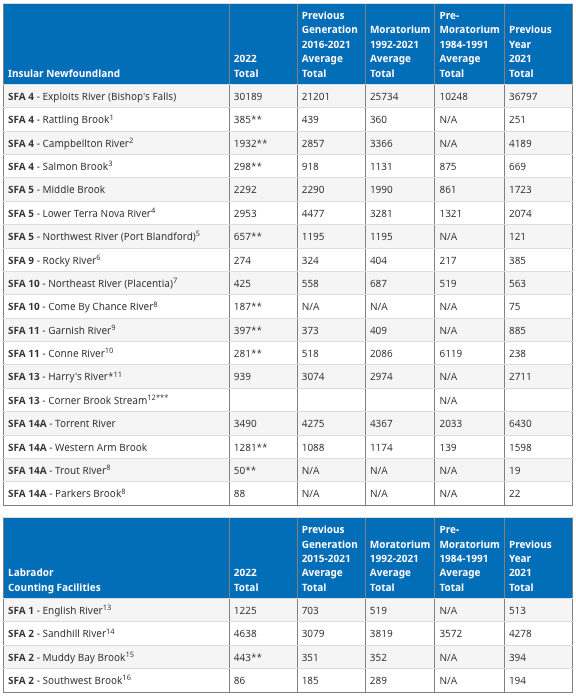
Western Newfoundland
Heavy rain at the end of August caused water levels to spike on many rivers in Western Newfoundland. However, hot weather conditions over the Labour Day weekend caused them to drop as quickly as they rose. Conditions remain low and warm in most areas, including Harry’s River, Southwest River, and Robinson’s River, resulting in poor angling conditions.
The water level rose a little on the lower Humber but the water temperature in this section of river remains warm (Averaging 19 degrees Celsius). On the upper Humber, the water level increased from low to high (30 c/m/s to 70 c/m/s) but within two days it dropped back down to 35 c/m/s. The water temperature in this section of river is also averaging 19 degrees Celsius.
Northern Peninsula
The recent rain caused the water level on Main River (Sops Arm) to rise quickly from low to flood conditions, making angling near impossible. Currently, the water level is low again and the water temperature is warm. Further up the Northern Peninsula, water levels rose on Torrent River and Castor Rivers and these levels are holding. Despite cooler night temperatures in this area, water temperatures remain warm at 18 degrees celsius during the day. Reports indicate that the odd fish is being hooked here, despite less than ideal conditions.
Labrador
In Southern Labrador, Rob French (Bigland Outdoor Adventure Lodge) reports conditions on the Pinware have been excellent for the past couple of weeks. Unfortunately, he says there are very few fish in this section of river, and very few anglers fishing, since most salmon have now migrated to the upper sections of the river.
Again, heavy rain last week caused water levels to rise from low to mean daily flows (i.e. 120c/m/s to 240 c/m/s). Due to cold night-time air temperatures the water temperature is dropping to about 9 degrees Celsius at night but rising to 18 degrees Celsius during the day. There remains a decent sign of fish in the area and anglers are still having decent success.
Further North, guide Chris Duffett (Flowers River Lodge) reports that they had one of their best years ever this summer with many large fish being hooked by their guests. However, water levels are very low at the moment and the water temperature is warm. While fishing has slowed considerably, guests t are still hooking a few fish, many of which are large.
Central Newfoundland
Unfortunately, Central Newfoundland did not receive any of the rain last week. The rivers in this region remain extremely low and warm (i.e. ranging from 18-22.5 degrees Celsius daily). While there is still a good sign of fish on the lower, angling has slowed as the Gander River the river is currently flowing at just 20 c/m/s. Conditions also remain poor on the Terra Nova River and as such this river remains open for morning fishing only. Meanwhile, the odd fish is still being hooked on the Exploits River, including a nice female fish hooked and released by Greg Fewer on September 3rd.
Avalon Peninsula
Heavy rain last week caused water levels on most rivers in this region of the province to rise quickly. Well-known angler, Rick Maddigan, sent along the following report from the Salmonier River:
Heavy rain last week rose the river to spring runoff levels. The last of the fish had no trouble reaching their spawning grounds. Overall, it was a good (not great) year. Runs were early, water was high and cold in June making for good fishing but July and August brought poor fishing with low, warm water. It is likely that minimum seeding of 1.200 fish was reached.
Below is a picture of the last natural barrier on the river, Metcalfe’s Falls (taken last week). In normal water, it is a leap falls of some 8- 10 feet. Above here, the river is comprised of some 15 ponds, all within the Avalon Wilderness Reserve.
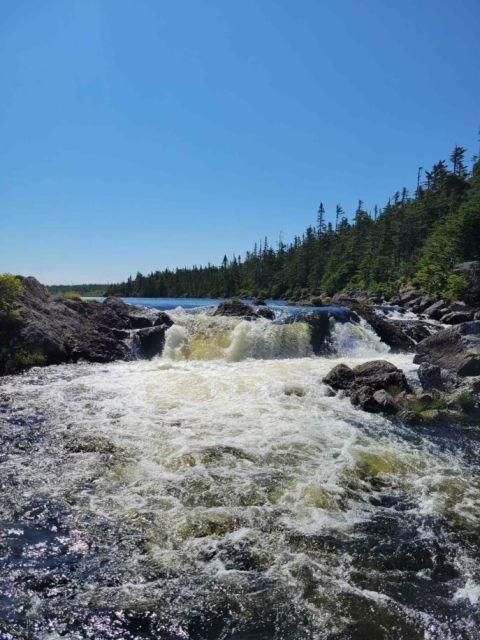
Click on the link below to sign:
Take Action – Tell the Nova Scotia government to protect Archibald Lake!
SMRA’s President, Scott Beaver comments:
We are asking everyone to write a letter and share the campaign via Twitter, Instagram, Facebook and word of mouth.
Please encourage your friends and family to sign and send in their comments. If we all can do this, we can make sure the Nova Scotia government knows that this is an issue that must be addressed. Our hope is that we will successfully ensure the Archibald Lake Wilderness Area is finalized and put a stop, once and for all, to the open pit gold mine proposed for Cochrane Hill.
To learn more, visit The Gold Mine Conversation today.
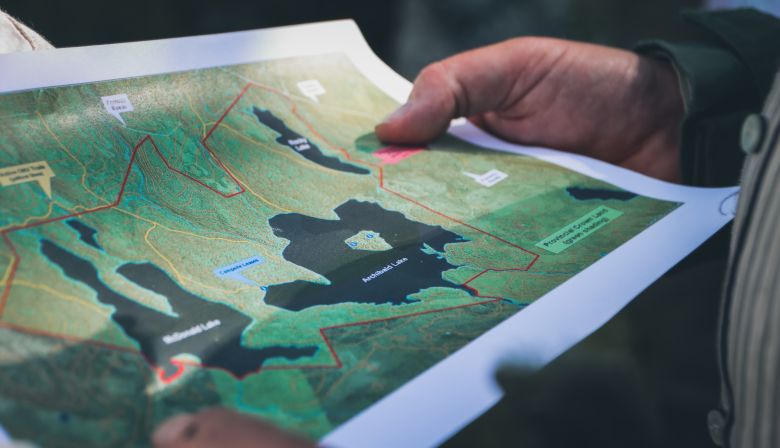
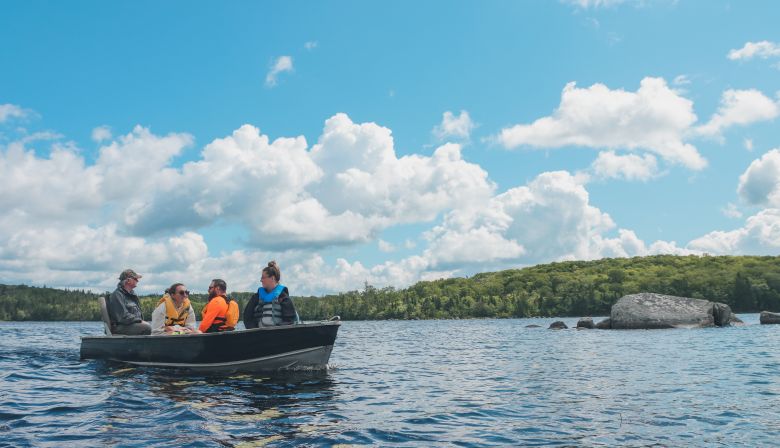
Days are getting shorter, and nights cooler. A sure sign that fall is in the air. Soon the leaves will begin to make their glorious change in colour. It’s time for the fall run of the majestic Atlantic salmon.
The fall season usually means higher water, but not as of yet on the Margaree river. With cooler temperatures on the lower river, DFO has re-opened the river (See Re-opening Notice). This will take effect today, September 8th at 4 PM and will remain in place until further notice.
With such low water and no relief in the near future, we must think of other ways we can protect the salmon in such conditions. Perhaps, in the near future, we can consider low water level protocols and alternate options with DFO.
With conditions like these, I personally move from the river and target trout in colder streams and brooks. We can also move to tidal water to fish for striped bass. Stripers are great fun on the fly and excellent table fare.
On another note, all signs point to good numbers of fall fish. These salmon, like us, are patiently waiting on rain so we might enter the river system again.
As a guide, fair warnings go out to clients on conditions and what to expect. Also, a reminder — September is catch and release for all speckled trout (brook trout).
Tight lines to all. I hope to see you on the river!
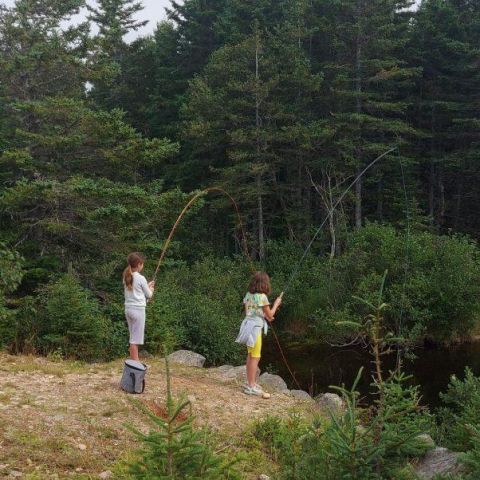
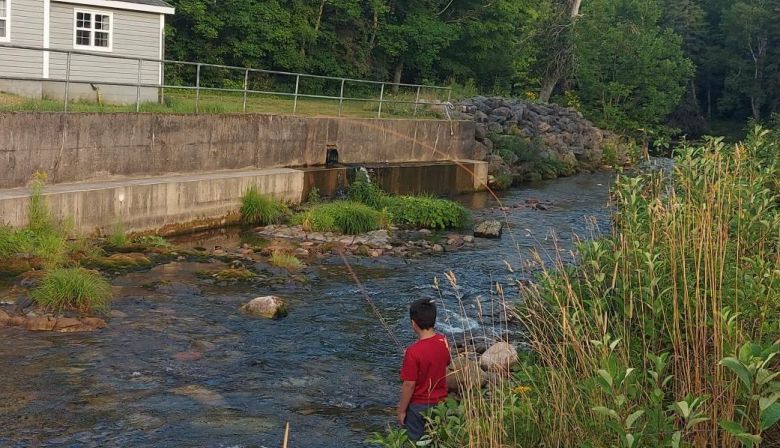
Please call today at 902-248-2555 to reserve your seat. We look forward to seeing you there!
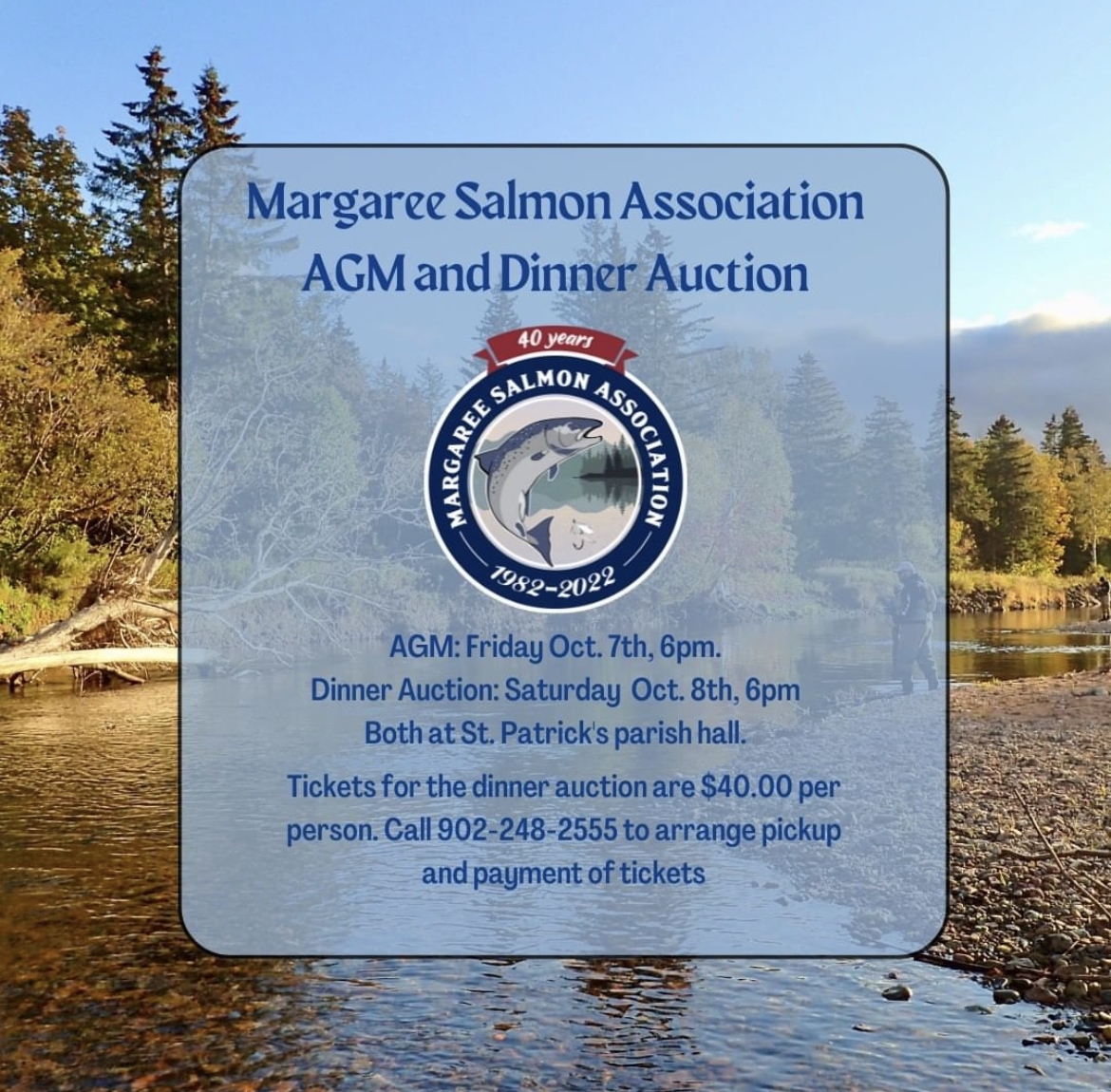
The Antigonish Rivers Association (ARA) invites you to their upcoming event.
If you haven’t purchased your tickets, call Dana today to secure your seat!
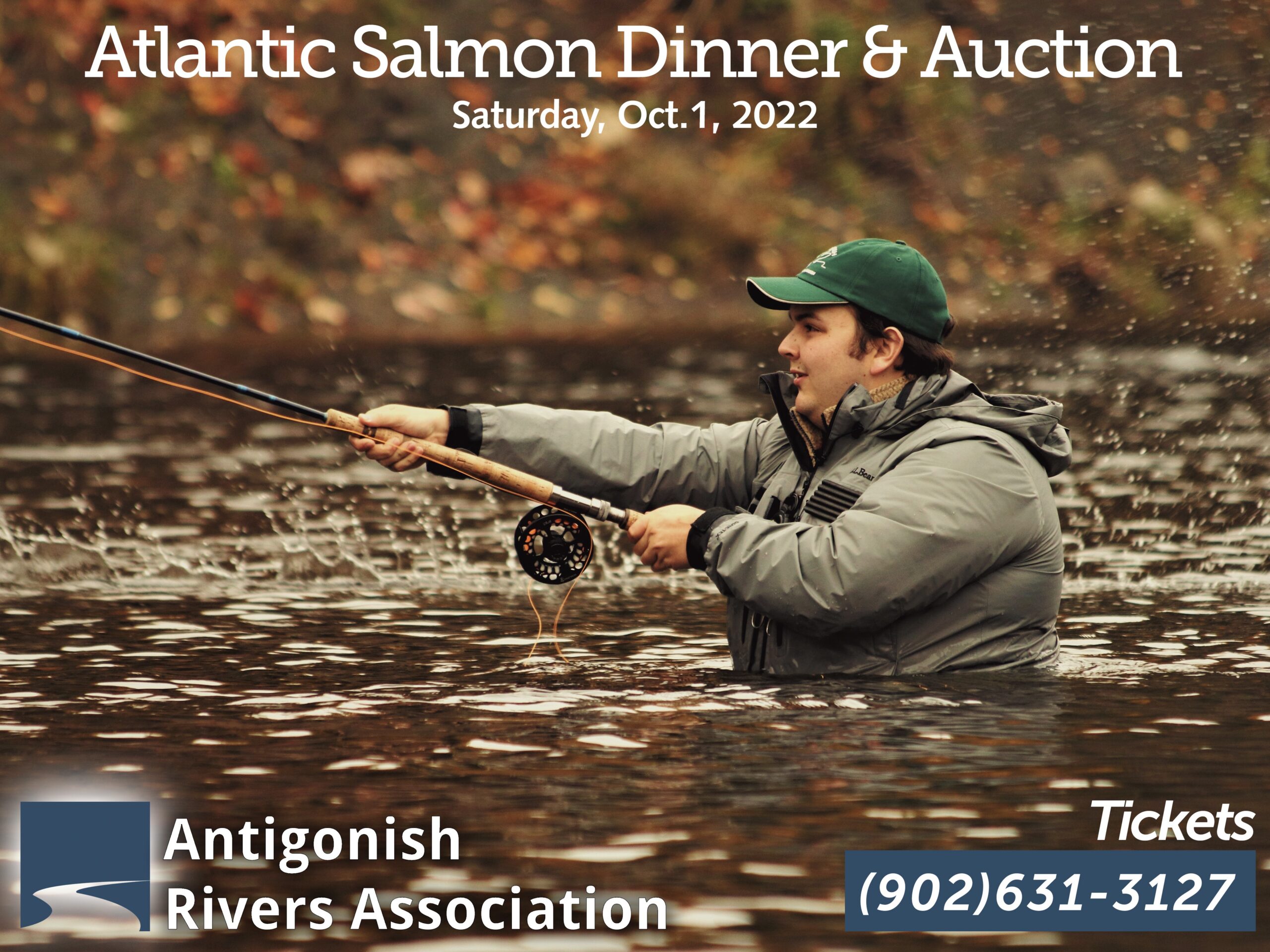
Il ne reste que 24 jours de pêche avant la fin de cette saison qui fut difficile dernièrement dû au manque d’eau dans nos rivières. Depuis la fin du mois de juillet, les conditions de pêche ont été difficiles jusqu’à ce jour, mais le saumon au rendez-vous et le mois de septembre nous réservent toujours des surprises.
N’hésiter pas de partager vos expériences et vos photos avec nous, il nous toujours plaisir des joindre à ce blogue hebdomadaire.
Les données utilisées dans ce rapport proviennent de divers sites web, des médias sociaux et de source gouvernementale québécois. Les informations peuvent changer sans avis au préalable en ce qui concerne les comparatifs des saisons précédentes.
Rivière Matane
Cumulativement, en date du 5 septembre, 1 207 saumons et 1 032 madeleineaux ont franchi la passe migratoire pour un total de 2 239.
638 captures ont été déclarées par les pêcheurs sportifs, dont la remise à l’eau de 195 saumons, 82 madeleineaux et la récolte de 62 saumons et 299 madeleineaux.
Jusqu’au 7 septembre 2021, 2 261 poissons (930 saumons et 1 331 madeleineaux) furent comptés par le biais de la passe migratoire.
Pour leur part, les pêcheurs sportifs avaient signalé 756 captures jusqu’à ce jour, dont la graciation de 172 saumons, 147 madeleineaux et la récolte de 50 saumons et 387 madeleineaux.
Rivière Bonaventure
L’APSB (association des pêcheurs sportifs de la rivière Bonaventure) a publié ses statistiques au 3 septembre. 1 394 captures ont été déclarées dont 1 055 remises à l’eau et 339 madeleineaux récoltés.
En date du 4 septembre 2021, l’APSB faisait rapport que 1 140 poissons avaient été capturés, dont 694 saumons graciés et la récolte de 446 madeleineaux.
Rivière Madeleine
1 675 poissons ont été comptés jusqu’au 4 septembre, dont 1 092 saumons et 583 madeleineaux.
Cumulativement, en date du 2 septembre pendant la saison 2021, 1 634 poissons avaient franchi la passe migratoire dont 780 saumons et 854 madeleineaux.
1 692 poissons (898 saumons et 794 madeleineaux) ont été dénombrés jusqu’au 5 septembre 2020.
Rivière Matapédia
Les pêcheurs sportifs ont déclaré avoir pêché 715 poissons jusqu’au 6 septembre, dont 450 saumons graciés et la récolte de 265 madeleineaux.
Cumulativement au 6 septembre 2021, 678 poissons ont été capturés, dont 353 relâchés et 325 récoltés. Depuis le 1er août, la ventilation du nombre de saumon et madeleineaux récoltés n’était pas disponible.
Rivière Mitis
Jusqu’au 7 septembre, 1 534 ont été comptés par le biais du piège (1 076 saumons et 458 madeleineaux).
En date du 6 septembre 2021, 749 saumons et 999 madeleineaux avaient franchi le piège de comptage pour un total de 1 748.
Rivières aux Rochers
En date du 1er septembre 2022, 694 (577 saumons et 117 madeleineaux) ont été dénombrés par le biais du piège situé en aval de la chute infranchissable.
Les pêcheurs sportifs ont déclaré avoir pêché 278 poissons dont la remise a l’eau de 229 saumons, 14 madeleineaux et la récolte de 35 madeleineaux.
Comparativement au 14 septembre 2021, 592 (246 saumons et 346 madeleineaux) avaient été comptés. 175 captures étaient déclarées dont la graciation de 87 saumons, 39 madeleineaux et la récolte de 54 madeleineaux.
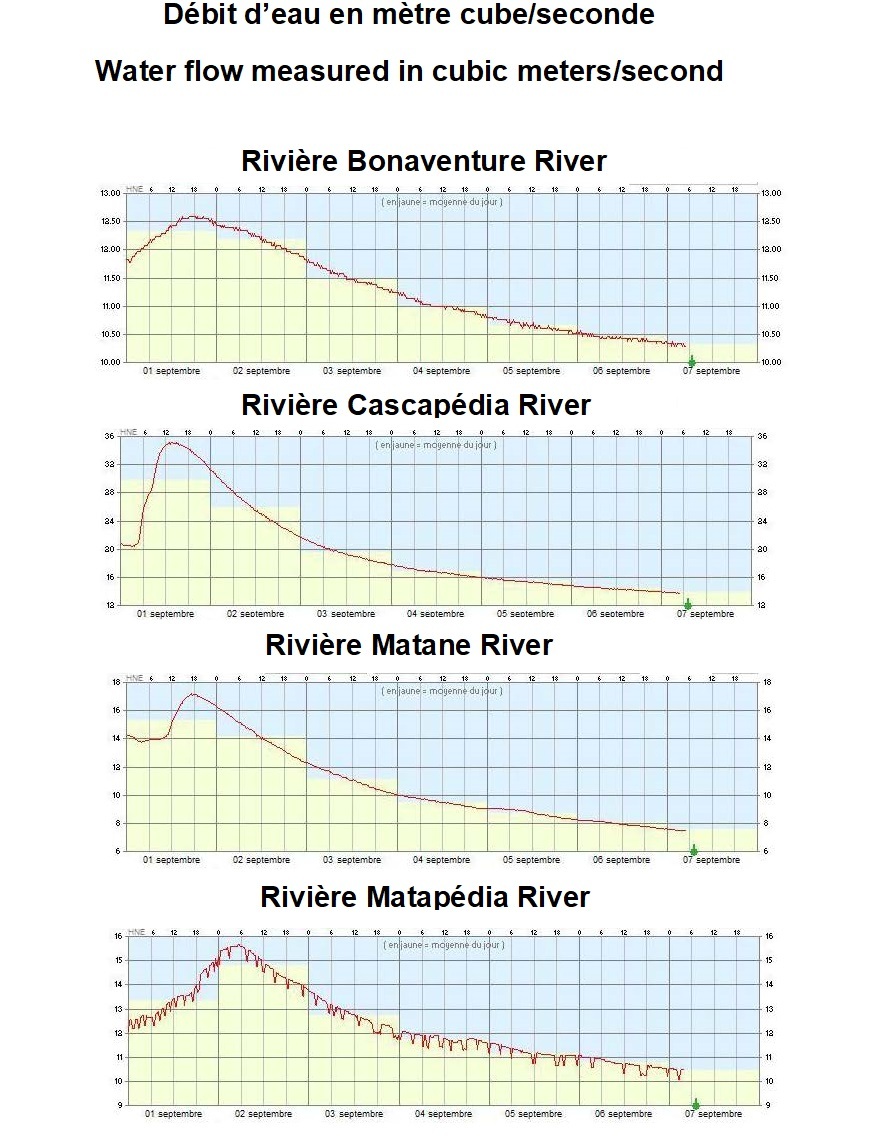

With 24 days left in the very encouraging 2022 season, a good amount of rain in strategic areas such as Murdochville and Amqui would help many rivers. Water levels may be low, but the salmon are present in very good numbers which can produce some September surprises.
Don’t hesitate to share your photos and stories with us, we are always ready to include them in this weekly blog.
The data used for the Quebec River notes has been sourced from various river websites, social media and Quebec government sources. Information may change without prior notification respecting past year’s comparative figures.
Tight Lines!
Matane River
As of September 5th, for the season, 1,207 salmon and 1,032 grilse have been counted for a total of 2,239. To date, anglers have reported landing 638 fish consisting of 195 salmon and 82 grilse released, with 62 salmon and 299 grilse harvested.
To September 7th, 2021, for the season, 1,649 salmon and 1,001 grilse have been counted, for a total of 2,650. Anglers had reported landing 745 fish consisting of 245 salmon and 90 grilse released, with 119 salmon and 291 grilse harvested.
Bonaventure River
According to the statistics provided by the APSB (Bonaventure Sport Fishing Association) to September 3rd: 1,394 fish have been reported landed, consisting of 1,055 releases and the harvest of 339 grilse.
Bonaventure anglers reported, cumulatively for the season as of September 5th, 2021, 963 fish consisting of 657 salmon released and 306 grilse harvested.
Madeleine River
The Zec is reporting a cumulative total of 1,675 fish (1,092 salmon and 583 grilse) being counted through the fishway at of September 4th.
1,692 fish (898 salmon and 794 grilse) had been counted for the season to September 5th, 2021.
Matapedia River
715 captures have been registered with the CGRMP to September 6th, consisting of 450 fish released and 265 grilse harvested.
To September 7th, 2021, anglers had reported landing a total of 678 fish, of which 353 having been released and 325 harvested. The breakdown of salmon and grilse harvested since August 1st was not available at that time.
Mitis River
1,534 fish have been counted at the fish trap as of September 7th, 2022, consisting of 1,076 salmon and 458 grilse.
To date on September 6th, 2021, 1,475 fish (738 salmon and 737 grilse) had been counted.
Aux Rochers River
Cumulatively for the 2022 season on September 1st, 694 fish (577 salmon and 117 grilse) have entered the fish trap. Anglers have reported landing 278 fish consisting of 229 salmon, 14 grilse and 35 grilse harvested.
In comparison to last season, as of September 14th, 592 fish (246 salmon and 346 grilse) had been counted. 175 captures were reported by anglers made up of 87 salmon, 39 grilse released, and 54 grilse harvested.
Reports from Country Haven Lodge speak of fresh male salmon hooked at Black Brook lodge, which is often an indication that the fall run has begun.
Earlier this week, Brad Burns shared the following comments:
The Millerton and Cassilis trap numbers through August 31 were probably counted too early to contain all of this recent push of fish, but both traps gained ground on last year’s numbers. The SW Miramichi salmon number is now ahead of last year – and the 4th best since 2011 – even though last summer’s cool, wet conditions were much more conducive to attracting fish into the river. Grilse are still down considerably compared to 2021, but that’s a tough comparison because 2021 was the second-best grilse year since 2011. So far 2022 is the fourth best, and if we have a good fall run, we may gain some more ground. All of this is to say that the numbers are pretty good and may get better.
See the latest DFO Cumulative Counts for NB and review Brad Burns’ full blog HERE.
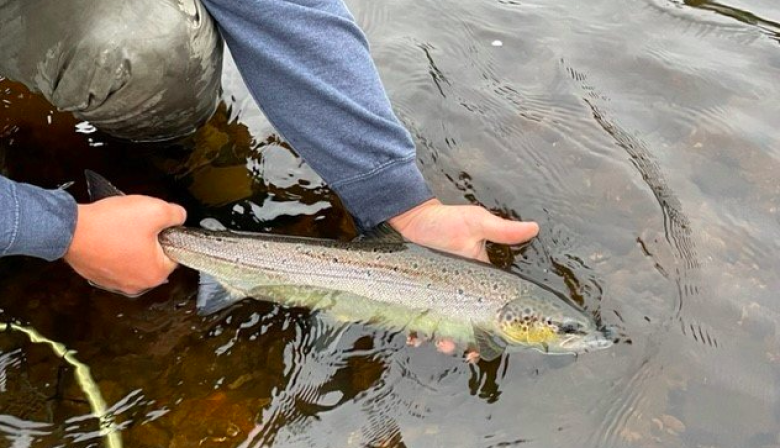
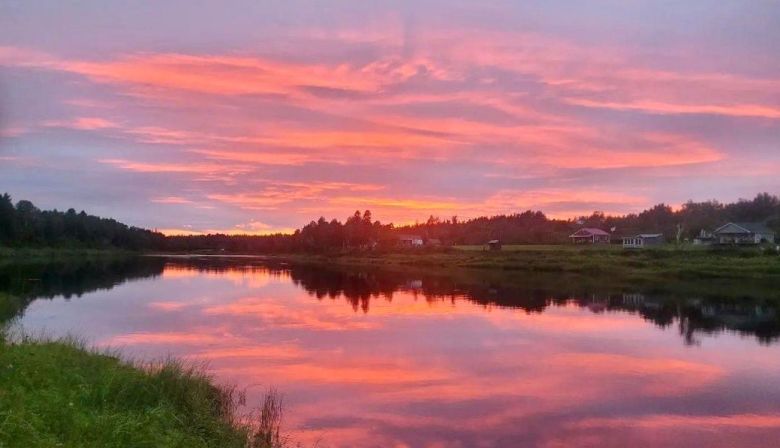
The Atlantic Salmon Museum in Doaktown has announced their 2023 Salmon Spectacular Raffle.

Temperatures have still been warm on the mainstem Kennebec throughout most of this past week, averaging around 22°C. Despite the rain that has come through the region this past week, the flow level in Sidney, ME has been steady – hovering just above 5,000cfs. The discharge level is now between the mean and 75% historic discharge levels (based on 36 years of data). (USGS current conditions).
The fish lift has been fully operating over most of the past week. No Atlantic salmon were captured since the last report.
Craig King (DMR) shares stock enhancement/beach seine project updates from the Kennebec and beyond:
This week wrapped up our fourth round of community assessment in the tidal reaches of the greater Kennebec river. To date we have completed 4 rounds of both the upper river sein survey and the lower river survey, for a total of 112 sein halls at 28 different sites.
As the summer slips away, seining becomes repetitive and we count spot tail shiners in our sleep, however the Kennebec never fails at giving us surprises. This week was no exception! This week for the first time, we caught a summer flounder in our sein! Summer flounder (Paralichthys dentatus) are a popular game species in other New England states and warmer waters, however this was a first in our survey. The most commonly caught flounder in our lower sites is winter flounder (Pseudopleuronectes americanus).
